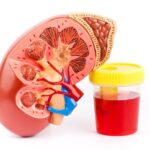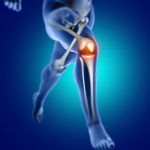The uterus has different layers. One is the myometrium. A type of benign tumor arising from the myometrium is called a fibroid or uterine tumor. There can be various reasons for this. It can also be caused by an excess of estrogen hormone or trauma to the uterus.

Fibroids are most common in women of reproductive age. Tumors can occur inside and outside of the uterus, apart from the uterus. Many people think that tumors in the uterus are only for older and married people. This disease can also happen to young people. Heredity, certain growth factors and genetic factors are attributed to the disease in unmarried women.
Diagnosis for Uterine Tumor
For uterine tumors, the first thing to do is consult a doctor. It is usually diagnosed by ultrasonography. Tumors are caused by excessive and abnormal growth of uterine muscles. 20 percent of women over 30 are affected by this problem. Although fibroids are benign tumors, they are usually not as dangerous as other cancers.
However, due to two problems, good treatment is needed. Firstly it can lead to excessive menstruation and hence anemia. Secondly, it is considered one of the causes of infertility.
However, 25 percent of fibroid tumors do not cause any lifelong problems. In most cases, the symptoms are more or less excessive bleeding or irregular periods, or a feeling of heaviness in the lower abdomen.
If the uterus is enlarged due to fibroids, the number of blood vessels in the inner wall of the uterus increases and the fetus cannot grow properly. The tumor is located at the junction of the uterus and fallopian tubes or in an area that prevents the embryo from implanting.
Those who experience infertility or recurrent miscarriages should be screened for other causes of infertility, even if they have fibroids.
Causes and symptoms of uterine tumors
Sometimes there can be a tumor in the uterine cavity. Its size can range from a pea to half a kilogram. Can be up to 8-10 at a time. It is more common in women aged 30-45 years. Continual stress on the uterine muscles, hereditary, hyperasternism can be due to these reasons.
The symptoms are—menses lasting for many days, cutting pains in the abdomen, cut-colored and foul-smelling discharge, lassitude, increased appetite and thirst, pain in the uterus, flatulence, urinary retention, profuse menses lasting for many days, profuse varicose veins, profuse sweating after menses, Bleeding from intrauterine tumor, etc. This disease can be cured if the symptoms are treated quickly.





















